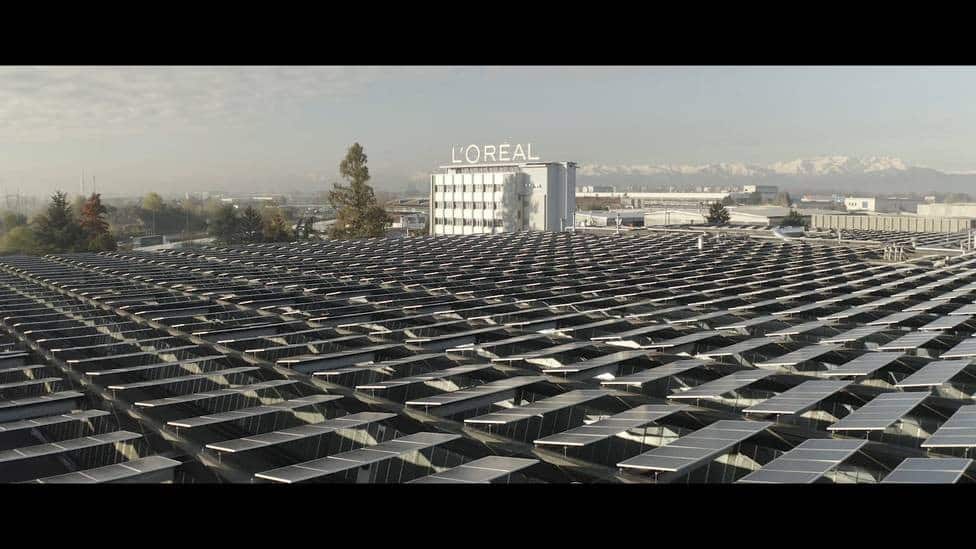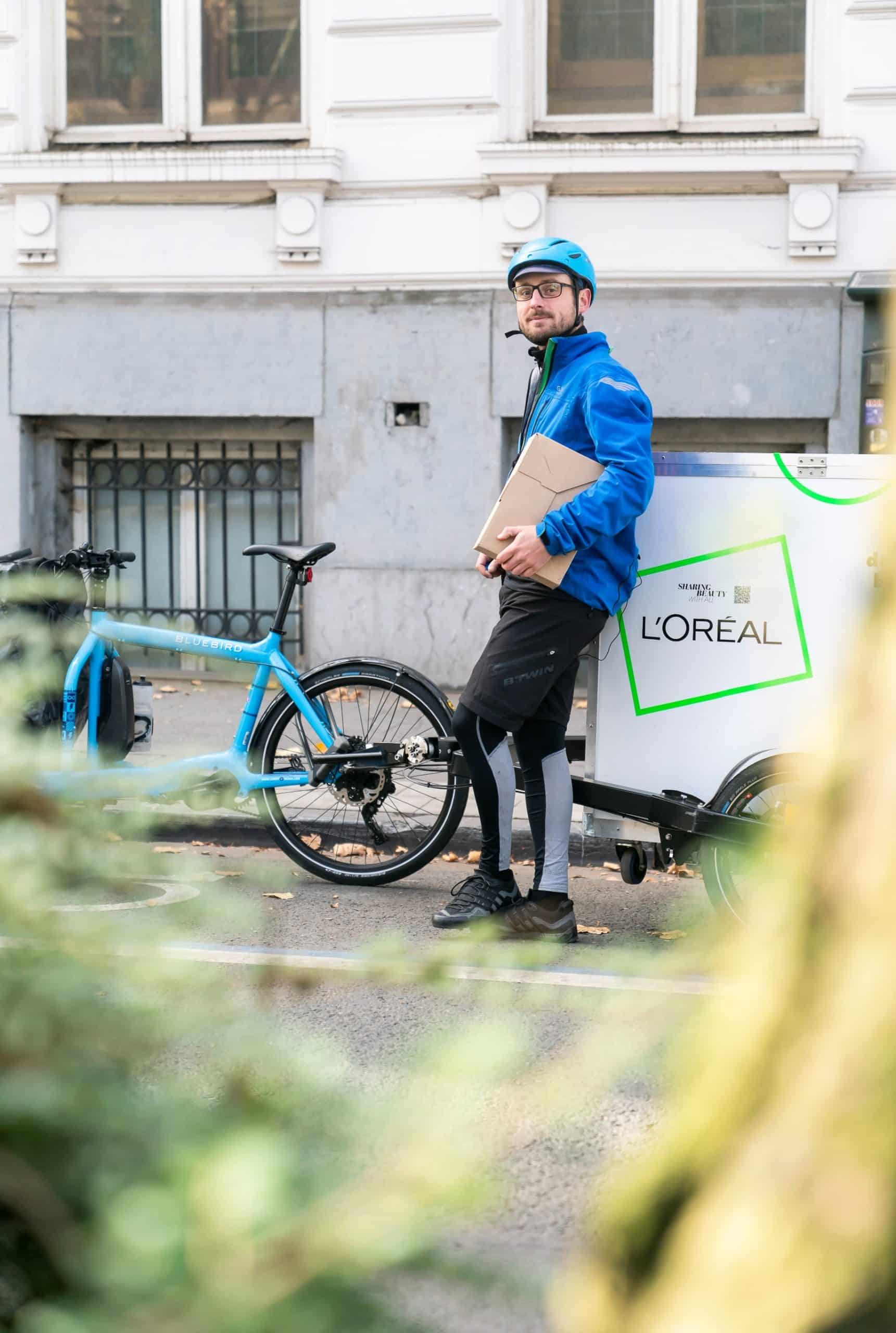
Creating a fund to regenerate nature
By creating the L’Oréal Fund for Nature Regeneration, L’Oréal aims to go beyond reducing impacts within its value chain to contribute to the restoration of degraded natural ecosystems, on land and below water.

To help the L’Oréal Libramont factory become energy self-sufficient (electrical and thermal energy) through the installation of a biomethanisation/cogeneration unit, next to the site.
Since its construction, the L’Oréal Libramont factory has begun multiple efforts to address environmental challenges. The Group’s sustainability programme, Sharing Beauty with All, (which, in particular, set itself the goal of reducing the CO2 emissions of the Group’s factories and distribution centres by 60% between 2005 and 2020) was a catalyst to consider and action a fundamental transformation in terms of production and energy use.
The decision to use this technology was made to ensure production of renewable energy that would enable the site to achieve energy self-consumption (electrical and thermal) from renewable biomass:
Biomass, composed primarily of residues derived from the agro-food industry, is introduced into tanks called ‘digesters’ (4 x 3500m³). In these tanks, highly specific conditions enable bacteria to develop. These bacteria break down the material, and in this way, generate methane. This biogas powers cogeneration engines that, combined with a generator, produce electricity. The heat from the exhaust gases and the engine cooling systems is recaptured for the site’s thermal needs (heating the buildings, production of steam, process water etc).
This is the principal of ‘cogeneration’.
The unique aspect of the installation lies in the fact that the electricity and heat produced are used by L’Oréal. The production of green electricity being more than enough to meet the site’s needs, the excess electricity (enough to power around 5,500 households) is injected into the national grid.
The heat produced by the installation of cogeneration is used in different forms:
This installation replaces our boilers and generators fed by natural gas, which had met the factory’s needs. This solution remains today as a back-up solution for cogeneration.
on which the project has a significant impact
Scope 1 – The use of heat derived from the biomethanisation/ cogeneration unit.
Scope 2 – Replacing electricity taken from the grid (in Belgium) with electricity produced by the biomethanisation unit.
Scope 3
This system delivers a total reduction across the site of up to around 7,200 tonnes of CO2 per year. Comment: The site’s electrical consumption has hardly changed since the installation of the biomethanisation unit. This unit has a capacity of 10 GWh/year, the rest of the electricity produced is supplied to the national grid.
13 M€
2009
Libramont, Belgium.
This project has enabled us to create employment (five full-time employees).
It also contributes to the following SDGs:
The biomethanisation unit enables us to achieve the production and use of 100% green energy.
The electricity and heat for the site of L’Oréal’s Libramont factory are produced thanks to organic waste derived from local agricultural and the agro-food industry. The installation produces more energy than is needed for the functioning of the factory. Consequently, the excess clean electricity (enough for the needs of around 5,500 households) is injected into the national grid.
Pioneer in this area and motivated by the Group, the Libramont factory has invested significantly in important environmental infrastructure, enabling the reduction of waste (in part due to the installation of a drying greenhouse for mud in 2014), of water consumption (a Waterloop factory since 2019, following the combination of two technologies (inverse osmosis and evapo-concentration) and of its GHG emissions (carbon neutral since 2014, the Group’s first factory to achieve this, in part thanks to the installation of the biomethanisation unit).
Through the programmes Sharing Beauty with All (2013-200) and L’Oréal for the Future (2020-2030), the L’Oréal Group encourages, among others, its businesses to manufacture sustainably and significantly reduce their impact on the environment. For the year 2020, all the Group’s production sites were set the goal of reducing their consumption of water, waste and GHG emissions by 60%, compared to 2005.
In terms of figures, in 2020, the Libramont factory reduced its waste in grams per finished product by 34%, recycled 100% of its industrial water in a loop, and was carbon neutral.
Through the L’Oréal for the Future programme, the Group is continuing its efforts and is setting itself new ambitious goals to achieve by 2030.
The L’Oréal Group and all its entities take important measures to reduce their impact on the environment and our planet. While our first sustainability programme, Sharing Beauty with All, which featured a series of ambitious 2020 goals, has reached an end, L’Oréal is going even further in its environmental ambitions with L’Oréal for the Future. This is a strategic programme through which the Group aims to take on greater responsibility, mobilise its entire ecosystem (employees, suppliers, customers etc.) and show that businesses can be part of the solution, in the face of the challenges facing the world.
This programme is based around three pillars:
Biomass technology is known but is strongly dependent on the geographical context and resource availability.
The project led by L’Oréal’s Libramont factory is operational and has been in place on our site for more than ten years. To guarantee the success of the project, a partnership of feedstock supply was developed with local industries (dairy, for example), based on the principles of the circular economy.
The original objective was exclusively environmental, rather than economic. The aim was that this installation would enable us to produce clean energy at a cost that was equivalent to using energy derived from fossil energy (natural gas and conventionally produced electricity).
francis.habran@loreal.com

By creating the L’Oréal Fund for Nature Regeneration, L’Oréal aims to go beyond reducing impacts within its value chain to contribute to the restoration of degraded natural ecosystems, on land and below water.

The carbon zero project established at the Settimo factory aims to achieve carbon neutrality by working on an innovative energy mix – the factory is heated in winter

The partnership between L’Oréal and the environmental start-up Gjosa has enabled us to design an innovative low flow shower head coupled with an easy-to-rinse shampoo, which…

To improve air quality and reduce its carbon footprint in urban areas, L’Oréal has launched the Green Last Mile (GLAM) project, proposing delivery solutions for its products using an active and sustainable means of transport.
AFEP (Association of French large companies) is an association representing 111 of the largest companies operating in France. It participates in the public debate with the ambition to provide pragmatic answers in favour of the development of a competitive and sustainable French and European economy, conducive to the growth of all companies.